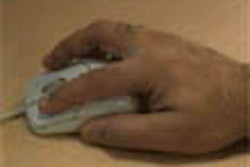MONTREAL - Now that PACS has eliminated radiologists’ central role as image gatekeepers, those who adopt information technology without also transforming themselves risk marginalization and even obsolescence, according to PACS pioneer Dr. Paul Chang.
"As I visit the world and look at PACS systems, I’ve seen positive implementations of these newer technologies, but also negative implementations that have contributed to the marginalization and minimization of the role of radiology," Chang said. "And that has disturbed me as someone who is an advocate for the propagation of electronic management of images."
Chang, a professor of radiology and chief of radiology informatics at the University of Pittsburgh Medical Center in Pennsylvania, gave the closing address on Tuesday at the International Congress of Radiology.
"In many ways the hard part about changing the way we practice radiology around the world has nothing to do with technology, and everything to do with changing ourselves," he said.
If radiologists are to survive in a world where medical images are instantly available on demand, they must reengineer themselves as completely as the technology they use has transformed the workplace, he said.
PACS pluses
It is not as if PACS should or could be avoided. PACS has been shown to provide easier, more cost-effective storage and distribution. Thanks to fast access in trauma settings, and comprehensive access to prior exams, electronic image management is thought to positively affect patient outcomes. It has been demonstrated to improve resource utilization.
In fact, Chang said, were it not for the productivity of PACS, the radiologists at his institution would never be able to read the 1.3 million studies a year they’re reading now, he said.
For today’s exams, film is simply not an option. Improvements in image quality and the diagnostic capabilities of scanners have led to enormous datasets that can only be managed electronically.
"The ability to fully leverage PET/CT and multispectral datasets such as MR and multidetector CT forces us to distribute and interpret these images in an electronic fashion," he said. "One other driver that’s forcing us into ever-increasing size and complexity of image datasets is the fact that our clinical colleagues have improved their ability to more precisely treat pathologic processes. As a result they are demanding from us more precise diagnosis and staging. And from an informatics perspective (it) inevitably results in greater size and complexity of image datasets."
Growing pains
But the increasing demands have left many radiologists suffering from an inability to provide timely services. The physical healthcare environment has grown more complex and widely distributed. Radiologists are under increasing pressure to constantly interpret more images -- and increasingly complex images -- more quickly and more accurately, he said.
"Before you act too sad or too sorry for yourselves, that is also the job description for my radiographers, my technologists; that is the job description of my 14-year-old son," Chang said. Everything is complex and time-compressed; expectations both from patients and colleagues have increased.
The causes have little to do with medicine, he said -- one need only look at the rest of the world. A few years ago it would have been perfectly acceptable to order a book from a mail-order catalogue and receive it a week later. Now Federal Express had better deliver tomorrow what you order from Amazon.com today.
"It is that expectation for immediate response, and the accessibility of information, that increases expectations (significantly)," he said. More than one patient has surfed the Web and shown up for an appointment knowing more about their disease than the doctor does.
So it goes in radiology, where Web-based and enterprise-wide PACS gives the referring clinician access to images at the same time the radiologist receives them. The result is incredible pressure on the radiologist to be both relevant and timely.
Where’s my report?
"We know that PACS will allow simultaneous access by multiple users, and since the nature of patient care these days tends to be driven by subspecialties and consultative workflow models, the ability for ubiquitous simultaneous access to images is very important," he said. "But understand that capability, if not handled appropriately by radiologists, can be used as a way of minimizing our relevance and importance."
This contention is supported by many groups that have adopted PACS, which have reported an unmistakable trend toward marginalization of the radiologist’s role, Chang said. But the problem with PACS is neither the technology nor the increased productivity, nor any of its other wonderful features, but rather the way it is perceived and implemented, he said.
"Many of us still retain a rather arrogant, radiology-centered perspective," he said. "We buy PACS to help us in radiology, (for) film savings, to improve my productivity so I can get finished earlier and watch my kids or play the back nine in my golf course. But unfortunately, if we maintain that very narrow perspective on PACS, it can be used against us."
It’s important to remember that PACS is not a goal in and of itself; it is not the product that radiologists provide. It is simply one component of the image management infrastructure, he said.
Skipping the radiologist
"One of my colleagues in orthopedic surgery actually said, ‘We don’t read your reports --because with PACS I can get images immediately,'" Chang recounted.
The orthopedic surgeon added: "What is your value when your report comes back six hours later when I’ve already made the medical management decision and the patient is gone? Certainly the radiologist has some value for eliminating 'satisfaction of search.' Your job as a radiologist is to pick the little incidental thing that I might not look for."
Is that all there is? If the radiologist slinks into the role of interpretation safety net, and becomes irrelevant to patient care, the future of radiology is bleak, Chang said. The only solution is for the radiologist to do what it takes to become an integral part of the clinical team.
Added value
The first thing people complain about when they get a new PACS is that everything becomes stat, Chang said.
"In the old days we could hide behind the fact that there was a delay between the time an image was acquired and when the ER doc called and said 'Where’s Mr. Smith’s film?’" Chang said. "We could say it was somewhere in lala land -- someone was printing or collating it or whatever. I could go off and have coffee. I could sit in my office and do some work or check the stock market or download pornography or I don’t know -- but I didn’t have to be in the reading room all the time."
Now the ER doc is on the phone as soon as the study is online, looking for a preliminary reading. Forget about the old rule of having two sets of eyes on every study, even if both sets of eyes are one’s own with an hour’s delay, Chang said. There is no delay. And there used to be other people to blame, like those who hung the film or did the transcription. No more. With PACS the radiologist does all those jobs.
Even more troubling is when PACS renders the reading room eerily quiet. Dr. Eliot Siegel and others have found a significant decrease in radiologist consults from clinical colleagues when PACS was implemented, Chang said. And pressed for time, many specialists are more than happy to bill for the reads themselves.
"This is a threat to us; this is a challenge to us," Chang said. When clinicians start looking at their own images and don’t bother to wait for the radiologist’s input, "you’ve been marginalized," Chang said. "When you lose control of the image library, you really have to demonstrate your value. If I don’t provide the services, someone across the street or across the world will."
Back in the day, it didn’t matter if the clinicians particularly liked the radiologists, he said. "They had to come down and talk to us occasionally because we were the keepers of the images," he said. "We could do all sorts of passive-aggressive games to make sure they came down...and actually listened to us, and we were able to demonstrate our relevance in image management."
How much value does today’s radiologist have when the report is delayed by hours or days? "I believe that your relevance becomes zero," Chang said, "and that’s a huge threat."
Adding value
Fortunately, there are a number of steps radiologists can take to add value to patient care, Chang said. They can start by dispensing with the list of studies on the workstation that need to be read for the day.
"A surgeon doesn’t care about what studies were done that day, or studies that need to be dictated," he said. "The relevant worklist for her is, 'Who am I seeing that day in the clinic? Who am I operating on? Who is in the ICU?'" To master these scheduling priorities is to develop a mature, complex workflow model, Chang said.
So look at the clinicians’ schedules. Find out what scanned patients and referrings are up to, and arm yourself with software that minimizes latency and delay in reporting.
Chang’s group, for example, has developed software it calls the "preliminary report tool" that allows the clinician or resident or other nonradiologist attending to enter his impressions of a case on the left-hand screen. The dual window pops up whenever the image file is opened, and the attending radiologist can then put his impressions on the right-hand screen, updating it at any time. A four-year study of the software at Chang’s institution showed that 75% of the time the emergency department physician opened the image file, the radiologists' impressions were there first, he said.
The reason the preliminary reviews were so reliably available to clinicians was because of another gadget, which paged the radiologist automatically whenever an ER patient’s study was completed. If a discrepancy was found in a study when the radiologist wasn’t there, the software set off a "pretty obnoxious" alarm that could only be shut off when the attending opened the study and acknowledged the discrepancy, Chang said.
"You have to use this technology so that we are virtually right by every single person, every single OR, every single conference. Next-generation PACS developers are working on it. It’s integrating the whole workflow, integrating dictation, having the ability to work cooperatively," he said. "Without this system I’ve basically got an ER doc that’s threatening to bill."
Axing the reading room
Down the road a bit, departments might even want to get rid of the reading room entirely, putting the radiologists where the clinicians are. Reading rooms used to be needed because that’s where the images were, he said. What is their function now?
"It’s hard (for clinicians) to ignore us when we’re there," Chang said. "And they’ll say 'Hey, what do you think of this image?’ and they’ll learn by talking with us that we have value that goes beyond keepers of images. It requires dramatic reengineering of ourselves and how we do things."
At the same time, any number of problems -- such as how to provide subspecialty consultations 24/7, or how to give residents the opportunity to find abnormalities first in a time-driven environment -- defy easy solutions, he said.
Putting the customer first
Whatever one might think of certain entrepreneurial radiologists who will sell a whole-body CT scan to anyone with enough money to pay for one, these radiologists are doing something that every radiologist needs to start doing in the age of PACS: Figuring out what the customer wants (free parking? automatic paging?) and then delivering it, Chang said.
"Your customers, the clinicians, are constantly giving you clues," he said. "It’s not about film savings, it’s more than cost-effectiveness and turnaround time. It’s about you providing true value. Don’t think about electronic solutions. Think about what we want to be as radiologists. How do we want to practice radiology so that we’re relevant, engaged, valued participants?"
By Eric BarnesAuntMinnie.com staff writer
July 1, 2004
Related Reading
RIS and PACS -- together at last, June 11, 2004
Bush pledges support for electronic medical system, May 28, 2004EMR integration with PACS enhances information access, May 21, 2004
Federal government to push for paperless hospitals, May 7, 2004
U.S. makes SNOMED available through library, May 7, 2004
Copyright © 2004 AuntMinnie.com


















